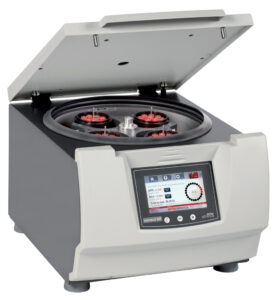Contact
On our page you will find a multitude of information that may be of your interest. If you have any questions, do not hesitate to contact our team:
Articles
and news

Meat provides an ideal environment for the development of microorganisms, which is why nitrites are commonly used as preservatives. These compounds inhibit bacterial growth, especially under pH conditions close to 6.
Analyzing the concentration of nitrites in meat products ensures that levels remain within the limits established by regulations such as the Codex Alimentarius and NTP (1999 Rev. 2019), thus guaranteeing food safety.
To carry out nitrite analysis in meat, the following laboratory equipment and materials are required:
Laboratory equipment:
Adjustable heating plate: to maintain the temperature of the extract.

Click here to learn more about this equipment.
Required reagents (commercial or prepared in the lab):
Additional materials:
1. Preparation of the meat extract
Mix 30 g of meat with 50 ml of distilled water at 80 °C and heat for 15 minutes on a heating plate. Transfer the mixture to a 250 ml volumetric flask, fill up with hot water, and place in a steam bath for 2 hours, stirring occasionally.
After cooling, add ammonium aluminum sulfate and centrifuge to obtain a clear extract. Fill up again to 250 ml with distilled water.
2. Calibration curve
Prepare five nitrite standards ranging from 0 to 1 mg/l. Add 1.25 ml of NED to each, let stand for 5 minutes, then add 1.25 ml of sulfanilamide. Fill to 25 ml with distilled water, let rest another 5 minutes, and measure the absorbance at 540 nm.
3. Sample analysis
Once the calibration curve is ready, proceed to analyze the prepared meat extract:
To determine the concentration of nitrites in the sample, apply the following formula:
NaNO₂ (mg/kg) = (L × 5 × 1000) / pm
Where:
According to NTP (1999 Rev. 2019), the maximum permitted levels in meat products are:
Nitrite analysis in meat products is essential to ensure chemical quality and food safety. Thanks to procedures like the one described and the use of laboratory equipment such as the Consul 22 centrifuge it is possible to verify that preservative levels remain within legal limits, protecting the final consumer and ensuring a high-quality product.
If you wish to receive our latest news periodically, do not hesitate to subscribe to our Newsletter.
* Required fields. These fields must be completed to submit the form. Thank you
I have read and accept the privacy policy of the Company.
I agree to receive your commercial communications